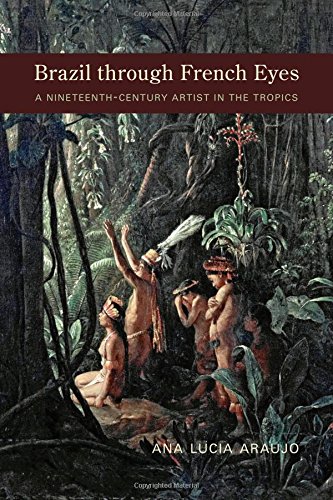Don’t Forget the Accent Mark: A Memoir
University of New Mexico Press
2011
110 pages
5.5 x 8 in.; 15 halftones
Paperback ISBN: 978-0-8263-5047-3
David Sánchez, Professor of Mathematics (Retired)
University of New Mexico

Raised in a Mexican home in an Anglo neighborhood, David Sánchez was fair-skinned and fluent in Spanish and English when he entered kindergarten. None of this should have had any influence on the career path he chose, but at certain moments it did. With the birth of the Chicano Movement and affirmative action, a different and sometimes disturbing significance became attached to his name. Sánchez’s story chronicles his life and those moments.
No matter how we transcend our origins, they remain part of our lives. This autobiography of an outstanding mathematician, dedicated to others, whose career included stints as a senior university and federal administrator, is also the story of a young man of mixed Mexican and American parentage.
Contents
- PROLOGUE
- Chapter One: EARLY DAYS
- Chapter Two: SECONDARY SCHOOL DAYS
- Chapter Three: COLLEGE: THE FIRST TWO YEARS
- Chapter Four: NEW MEXICO: VISIT ONE
- Chapter Five: ANN ARBOR: VISIT ONE
- Chapter Six: SEMPER FI: THE FIRST YEAR
- Chapter Seven: SEMPER FI: SAYONARA
- Chapter Eight: ANN ARBOR: VISIT TWO
- Chapter Nine: THE WINDY CITY AND ENGLISH LIFE
- Chapter Ten: WESTWOOD DAYS
- Chapter Eleven: NEW MEXICO: VISIT TWO
- Chapter Twelve: PAPFR-PUSHING DAYS: PRIVATE AND FEDFRAL
- Chapter Thirteen: A BRIEF TEXAS INTERLUDE
- Chapter Fourteen: ACADEME AND NEW MEXICO: THE FINAL VISIT
- APPENDIX
Chapter 1: EARLY DAYS
Sanchez is a pretty common name in the southwestern United States. More properly it should be spelled Sánchez, as I was informed by my grandfather Cecilio shortly after I moved into my Mexican grandparents’ home in San Diego, California, at the age of three. I asked him what was the funny mark above our name, and he sternly replied, “Asi se escribe nuestro nombre en esta familia” (In this family that is the way our name is written). Don Cecilio was not a person to be disobeyed, so whenever I sign my name, the accent mark is always there—a little symbol of my Mexicanness in the Anglo world in which I was raised.
Growing up, the accent was not a problem, except for a few raised eyebrows now and then because I look more Irish or Welsh than Mexican. But when I was in training in the Marine Corps, we were required to stencil our names on our utility shirts. I decided to add the accent mark, which really angered one of my drill instructors. He asked me what it was, and I replied as my grandfather had done. He loudly accused me of being some kind of a French pervert or a communist sympathizer; uniformity is a very strict requirement of Marine Corps training, even on stencils. I stood rigidly at the best USMC attention, just as loudly repeated my reason, and after a few more insults, the DI stormed off. I never heard any more about it.
Nowadays you see the name Sánchez everywhere. There are writers, artists, entertainers, military personnel at all levels, news commentators, athletes, politicians, and scholars, many of them with the first name David. But well into my early middle age, I rarely encountered a namesake, and I regarded myself as a typical American but with the advantage of being bilingual. No English was spoken in my grandparents’ house. When I arrived, I only spoke English, but my grandfather insisted that every Sunday we have a Spanish lesson, using some of the old primers he used as a boy in Mexico in the late eighteen hundreds. When I entered kindergarten, I could already read and speak Spanish. Since there were only two Mexican families in our neighborhood, Mission Hills (middle to upper class then, but now much more posh), it was English out the door and Spanish in the door.
In the thirties and early forties, San Diego had a population of about two hundred thousand, with a sizeable Mexican population largely living in the Logan Heights neighborhood. We would visit friends there frequently; many of them were families whose parents had fled Mexico during the Mexican Revolution, just as my grandparents had done. Birthday and holiday fiestas, lively events in which I enthusiastically participated, were packed with our Mexican friends, which certainly enhanced my appreciation and acceptance of my heritage.
Statistics on the composition of today’s Latino households shows many families in which the grandparents are raising the children, usually for reasons such as an illegitimate birth or a broken marriage. Many of these grandparents are trying to protect the family structure and reputation and want to insure that the child is raised in a loving environment with attention being paid to its education. The Mexican grandparental culture is a strong, supportive one from which I certainly benefited.
How did I acquire the name Sánchez? I was born in 1933 in San Francisco, probably out of wedlock, the son of Berta Sánchez and a man I prefer not to identify. (I did not know his name until I was seventeen, when my grandmother had to emotionally provide my birth certificate in order for me to apply to the Navy Reserve.) When I was three years old, my mother decided to move back to Mexico; she was bilingual and a skilled secretary, so there were good job opportunities. But she had no confidence in the Mexican medical system and did not wish the stigma of being an unwed mother. So she arranged for me to be raised in San Diego by my grandparents, Cecilio and Concepcion Sánchez…




